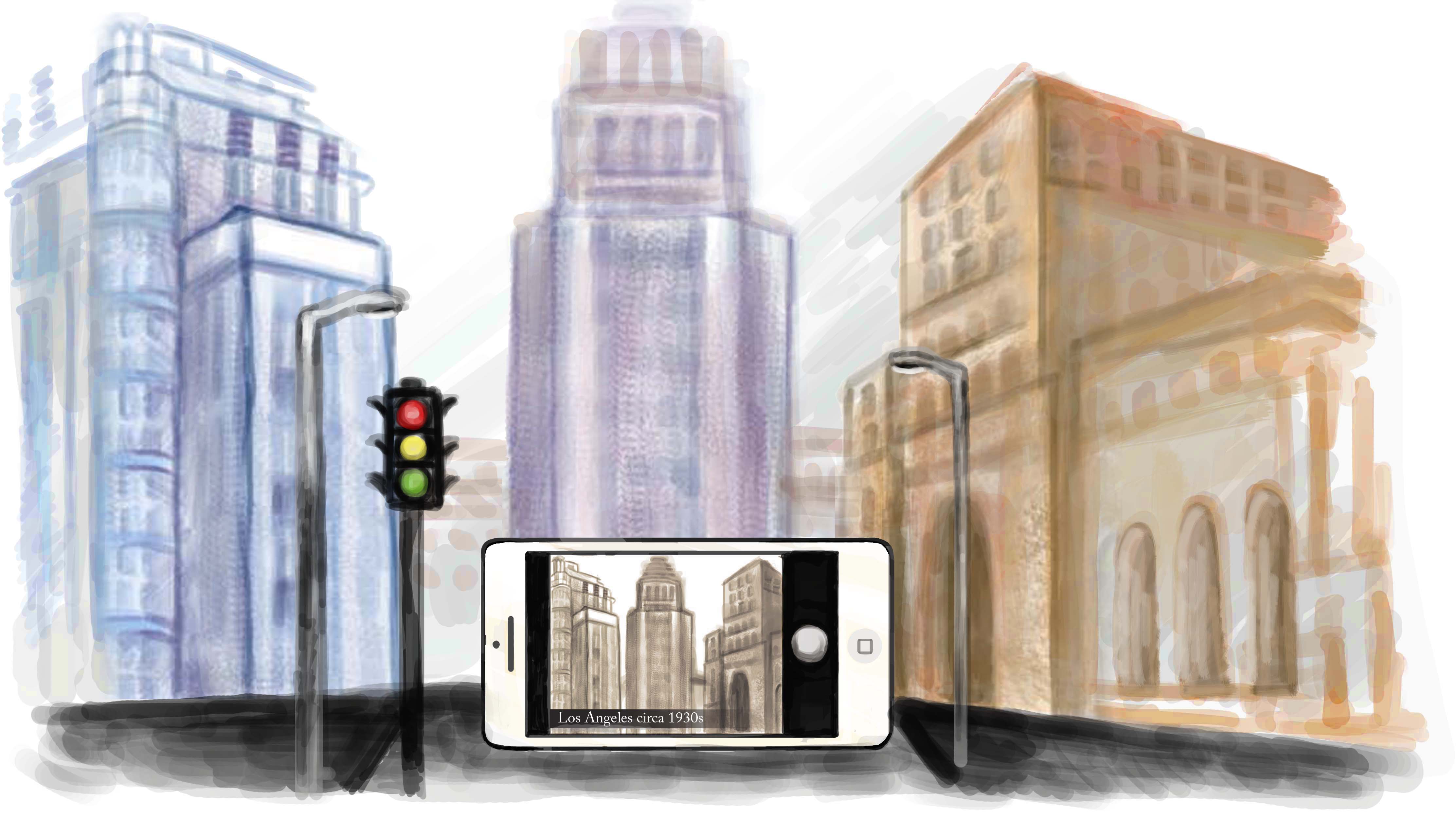Faculty launches books exploring social questions through digital humanities

Kelly Cheuk Ying Ho/Daily Bruin
By Joshua Greenberg
Nov. 19, 2014 12:00 a.m.
There is a soccer stadium in Berlin with layers of invisible past buried below it.
In the early days of the 19th century it was lower-class housing. Then it was a small train stop. Then, progressively larger and more baroque train stations were built on the site. In World War II, that train station was used for war-related ends. Then it was bombed into rubble. Finally, Berliners built a soccer stadium on the rubble.
This story was used for a class on Berlin taught a decade ago, a project that grew to a program with three authors and dozens of contributors. It’s the subject of “HyperCities: Thick Mapping in the Digital Humanities,” one of two books by UCLA faculty launching at an event on Wednesday. The other, “Graphesis: Visual Forms of Knowledge Production” is about how systems like graphs and flowcharts shape meaning on computerized media, as well as the history of these visual tools.
Both offer some answers and new questions for today’s age in the digital humanities – a new field that combines humanistic and technical aspects of social questions. The launch event will feature a roundtable and question-and-answer session with the four authors.
“HyperCities” is written by professor Todd Presner, lead academic developer for the Center for Digital Humanities David Shepard and geographic information systems coordinator Yoh Kawano. “Graphesis” is written by information studies professor Johanna Drucker.
The books are officially launching together because they are both in the new metaLABprojects line by Harvard University Press, said Drucker. The line takes academic research about the digital humanities and publishes it in glossy, image-filled volumes.
Drucker, Presner and their editor Jeffrey Schnapp worked together on a digital humanities anthology a few years ago, Drucker said.
“I write a lot of books, and I don’t do book launches very often,” Drucker said. “We know each other well, and (Schnapp) wanted to know that we would have a manuscript in time,” Drucker said.
Before it was a book, “HyperCities” was a series of projects on a website by a number of other creators. These include a Twitter history of the Arab Spring in Egypt, a 3-D map of monument placement in the Roman Forum and maps of Jewish life in Los Angeles, along with Presner’s original Berlin project. The “HyperCity” idea is a series of maps – new and old – overlaid with data and stories that create a narrative about a place. It’s about making digital maps that tell stories using historical data. Presner said he believes the only way to understand the past is to tell stories about it from the present.
“In one particular moment you may want to learn about one particular past, and care about (it),” Presner said. “While in another time … a group of people may decide to extinguish that part.”
Kawano said he used social media scraping infrastructure – scripts that comb Twitter for posts with relevant hashtags at relevant times geolocated to locations. It was created for analysis of the Arab Spring and was used in the thick of Japan’s 2011 Tohoku earthquake. He sorted through about 750,000 tweets, finding individual stories like those of Tranquil_Dragon, a Japanese Twitter user who constantly broadcast her perspective during the disaster.
“I think it’s (research) relevant to the younger generation, because we’re studying social media and the effects of big data, but also associating with academic rigor and how it applies to research,” Kawano said.
“HyperCities” is very much a group project, Presner said. It’s more than just the three authors on the cover.
“One of the exciting things for the whole project is that students have been involved at every level,” Presner said. “They’ve been able to intern with the ‘HyperCities’ team. They’ve been able to get course credit. … This is ongoing, as part of our digital humanities program.”
The other book covered in the event is, in contrast to HyperCities’ group project anthology, a monograph by a single author.
Drucker’s book “Graphesis” comes from the Latin word meaning the process of writing. Drucker said she expanded on her previous work on the history of the alphabet to cover all media with a focus on how graphic design has changed in the digital age.
Drucker said her book extends her lines of thinking about the structures of visual data to all visual media. The background of the content influences the way it is perceived.
“We’re both really interested in … (the question) what can you do in the digital environment that you couldn’t do in the analog environment?” Drucker said.
Ultimately, the projects used the work of digital humanities undergraduate and graduate students as well as faculty members to further research projects, Presner said.
“This whole adventure was very collaborative and interdisciplinary, which I think is the nature of the humanities.” Kawano said. “We have to talk to everybody.”


